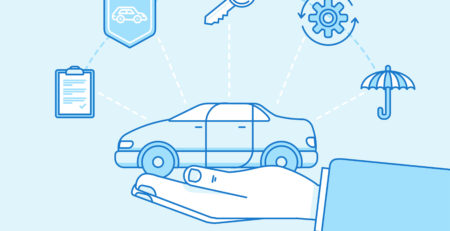Do your customers know about your UBI program? Only one in five customers are offered UBI—yet half of them end up enrolling.
Executive summary
Since 2010, LexisNexis Risk Solutions has investigated consumer attitudes toward usage-based insurance (UBI) and how best to drive adoption. The 2016 study surveyed more than 4,000 individuals and found that:
• Awareness of UBI has grown from 39 to 43 percent since 2015, representing a 10 percent increase year over year. However, the study indicates that exclusively marketing UBI as a way to save on premiums may be limiting expansion to audiences that are not motivated by premium discounts. In order to capitalize on untapped opportunities, carriers will likely need to adopt new marketing strategies and channels.
• Approaches other than discounting premiums can help carriers target new customer segments and expand market share without sacrificing the bottom line. In particular, discounting deductibles or offering roadside assistance are affordable and attractive ways to acquire new UBI customers. Furthermore, the study shows that many consumers are motivated by reasons other than cost savings. For example, carriers may be able to position UBI to appeal to non-financial motivations, such as improving young driver safety or minimizing a driver’s carbon footprint.
• There is significant growth potential for UBI programs. This year’s study found that 6 percent of households have a driver enrolled in a UBI program, compared with 5 percent in 2015. This represents a 20 percent increase throughout the past year.
• Among consumers who are offered UBI, half of them enroll—yet only one in five report being offered UBI at all. To drive adoption, carriers need to equip all channels, including direct channels, agents, brokers and call center representatives, with appropriate messages and tools to promote UBI.
• Word of mouth, social media marketing and customer testimonials may be needed to increase UBI adoption. For example, 56 percent of survey respondents said they wouldn’t enroll in a UBI program until feedback or reviews are available, and 40 percent said they wouldn’t enroll unless someone they knew participated first.
• Increased interest from consumers between the ages of 45 and 64 may offer carriers a new target market for UBI offerings. New marketing approaches will be crucial to helping carriers reach this particular, and growing, customer segment. Successful carriers will be those that can position and market UBI to emphasize the benefits that align best with their target audience’s needs and wants.
Overall, the results of the 2016 study show that there are untapped opportunities for carriers to expand UBI into markets beyond that of tech-savvy, price-sensitive millennials. By increasing adoption of UBI programs, carriers can better understand the risk associated with individual drivers, enable more accurate pricing and enhance the claims process. More broadly, UBI programs provide carriers with the opportunity to access a deeper and broader data set than is traditionally available to them. Today, big data and advanced analytics can help carriers differentiate themselves and achieve a competitive advantage, but in the not-too-distant future, the ability to collect vast amounts of data—and more importantly, derive meaningful insights from that data—will become table stakes. The time to act is now.
Download












